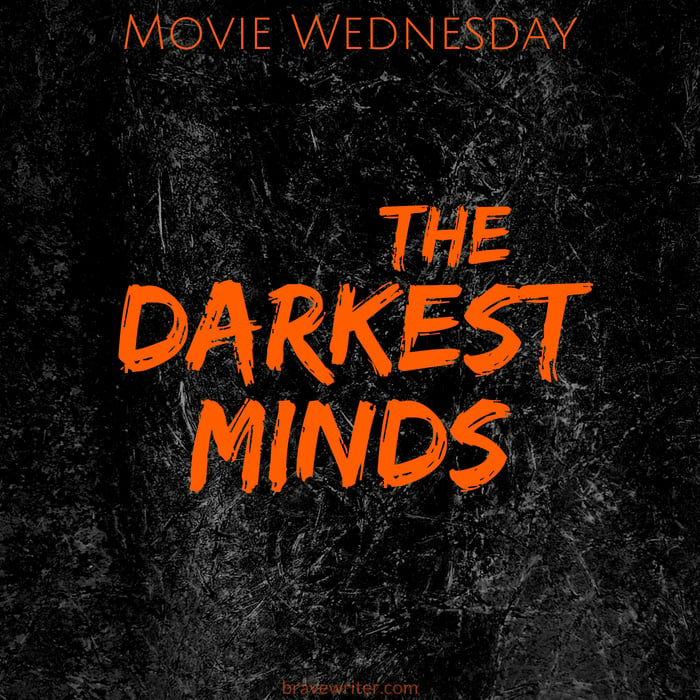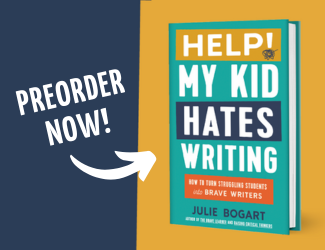Movie Wednesday: The Darkest Minds

by Amy Frantz, Brave Writer alum
In the near future, a mysterious pandemic has killed most of the world’s children. The children who survive develop superhuman abilities. In an attempt to control the youngsters and “protect” the populace, the government begins rounding up children and sending them to camps. Once there, the children are given colors which indicate the nature of their abilities and how dangerous they are; Reds and Oranges are “disposed” of immediately because their powers are too strong. Ruby Daly is an Orange who manages to disguise herself as a safe Green and survives in the camp for several years. But one day after a test, Ruby’s Orange status is revealed and she makes a desperate escape.
Once on the outside, Ruby meets Liam, Chubs, and Zu, children with superpowers who are on the run just like her. Together they search for a place where they can be themselves and safe from the government. But once there, they will learn that things aren’t always as they seem.
[This post contains Amazon affiliate links. When you click on those links to make purchases,
Brave Writer receives compensation at no extra cost to you. Thank you!]
The Darkest Minds is a 2018 dystopian film and was released in cinemas on August 3rd. It is based on the YA novel of the same name by Alexandra Bracken. The first book in Bracken’s series was published in December of 2012. Somewhat inspired by Bracken’s experiences during 9/11 as an adolescent, the themes of the book include the resilience of kids and teenagers through crisis.
The Darkest Minds is dystopian science fiction. What does dystopian mean? You might be familiar with the term utopia or utopian. A utopia is the idea of a fictional world in which everything is perfect. A dystopia, then, is a fictional world in which everything is awful. Dystopian fiction as a genre typically deals with totalitarianism and/or environmental crises. The crisis in the Darkest Minds is a deadly disease that affects only children.
Nontraditional casting, more commonly referred to as colorblind casting, is a practice wherein the actor’s race or ethnicity is not a consideration in the casting process for a traditionally white role. Nontraditional casting is sometimes used to counteract whitewashing in film and television, which is a practice that prevents actors of color from landing parts by casting white actors in those minority roles instead. A famous recent example of nontraditional casting is the musical Hamilton. The Darkest Minds is also just such an example. The leading role of Ruby, although originally white in the novels, was given to Amandla Stenberg, who is an actor of color.
A note to parents: The Darkest Minds is rated PG-13. We recommend looking up the film on sites such as Kids in Mind before deciding if it is right for your family.
Discussion Questions
- Colors in the Darkest Minds are very important. Did you notice that Ruby’s full name (Ruby Elizabeth Daly) is an acronym for red (R, E, D)? Other characters in the story have color related names (either actual colors, acronyms, or name meanings). This was done purposefully by Bracken. Which color names did you notice and what do you think these colors might reveal about who the characters are?
- When adapting a novel to film, changes and cuts have to be made to fit the format and time restrictions, so some details can get lost. If you’ve read the book, was there anything that the film did not include that you wish they had kept? Explain your answer.
- Dystopian fiction can often be seen as a warning that something like this could possibly happen. Do you think if there were an outbreak of a disease, like the one in The Darkest Minds, that the public would react the way they do in the story? Why or why not?
- In the film, the kids are assigned colors that describe their powers and how dangerous they supposedly are. Reds and Oranges are considered the most dangerous, but as we see throughout the film even the supposedly less dangerous powers can be used to cause damage. Why do you think this fictional society sees telepathy/mind-control and pyrokinesis as so much more dangerous than, say, super intelligence and telekinesis? What makes these abilities seem more or less threatening?
Additional Resources
Official Movie Trailer – 20th Century Fox YouTube video
The Powers Behind the Darkest Minds – 20th Century Fox YouTube video
Young Minds with Alexandra Bracken – 20th Century Fox YouTube video
Amy Frantz is a Brave Writer alum. When not over-analyzing Star Wars, in her spare time you will find her…actually, she mostly just over-analyzes Star Wars.
Tags: Diversity


















